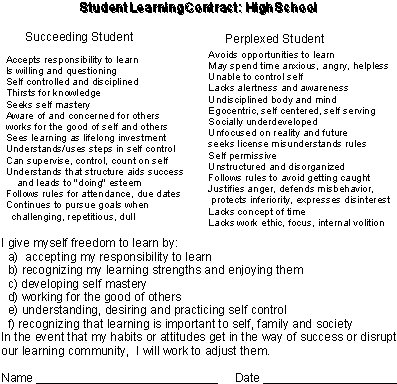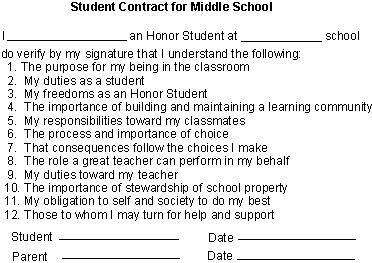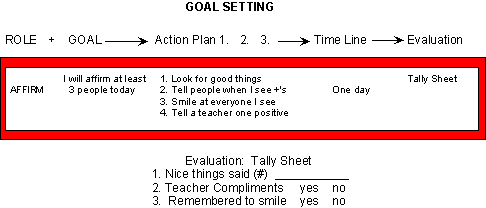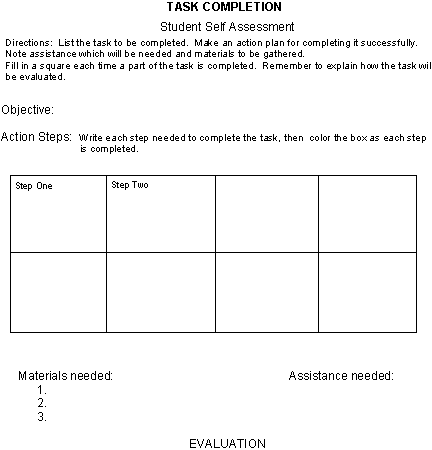| ESE504 : The Class : Adolescence : reading6 | |||||
Teaching and Learning:  New Visions for High School Teachers
New Visions for High School Teachers
Teaching is a complex interplay of professional skills and personality
traits rather than a set of moves or maneuvers (Clark & Astuto, 1994;
Hyman, 1997). It is human interaction (Piaget, 1970; Sch¨øn, 1983; Borko,
1989), the scientific, dramatic, and artistic, crafted and blended. Infinite
potential interactions occur from the number of student and teacher behaviors
that are potentiated. This can be multiplied exponentially by the underlying
motives, developmental needs and stages, the desires of each participant,
the learning ability, the interests and motivation (Tochon & Munby, 1993).
It is daunting to pare the possible exchanges and teacher responses that
occur in the good classroom into definable, observable, quantifiable events.
(Peterson & Comeaux, 1989). In classrooms that are open and creative,
learning interactions may vary even more dramatically (Kirst, 1991a, 1991b;
Wolf, et. al., 1991).
Attempts to define characteristics that set a dynamic world class teacher apart from the typical teacher, and turn those assets and peculiarities into reproducible behaviors that could be generated en mass, only partially succeed (Swanson, et. al., 1990) for many of the most crucial elements in a great teacher are elusive and idiosyncratic. Through history many of those revered and beloved were teachers (Socrates, Christ, Buddha, Mohammed, Copernicus). Still, we are not able to reproduce them, nor are teachers of such status commonly recognized among us. In fact, frequently during their lives, our greatest teachers were neither recognized as paragons nor valued highly for their contributions. Often they were denigrated by their fellows and it was as a result of their students and the “life” their teaching took on, that the prowess of their teaching ability was perceived.
![]()
Authentic Learning
In the same way that teaching is difficult to define, understanding and
recognizing learning can be as difficult to capture. Theories abound that
speak of cognition, meta-cognition, recall, perception, forgetfulness
(Siegler, 1991; Gagne, et. al, 1993; Driscoll, 1994). We seem hampered
by the need to name, capture and calculate this process and we are still
grappling with what is occurring in the classroom, the miracle of how
the mind accomplishes so much, why some people are unable or unwilling
to learn some of the material presented; the miracle of those who extend
learning and create novel and functional approaches that go beyond instruction.
In the past we returned to the developmental nature of conceptualization
(Piaget 1973, Vygotsky 1986), to social psychology (Allport, 1954; Erikson,
1963) and the study of modeling (Bandura, 1986) to capture learning and
teaching. We probed brain research, memory and retrieval, nonsense syllables,
visual, auditory and kinesthetic reception. We delved into encoding, the
long and working memories, training versus learning, and developed theories
of motivation (Stipeck, 1993). Pressing to produce a working model, we
turned to multiple forms of intelligence (Gardner, 1993), linked learning
styles and Jungian personality theory (Dunn & Dunn, 1978), evaluated and
measured types of questioning (Bloom, 1968; Weigand, 1971), probed retrieval
of facts and names, apparent learning blocks or disabilities, tactile
and intuitive ways of knowing.
Despite years of research, this quest for the working of the human mind
is very much an emerging frontier. We cannot assure that good teaching
necessarily leads to learning. There may be little direct relationship,
a curvilinear manifestation, or a coincidental rather than causal tie.
Each researcher has a perspective, and a predetermined way of defining
learning. What the researcher looks for is often what is observed. Using
this research model, we are still wrestling to define and measure intelligence,
grappling with definitions and measurement of creativity, humor, esteem.
Interestingly, most children love to learn, have a natural curiosity and desire to question. By age five the child of normal intelligence has learned a language, gained a personal sense of self, body control and sophisticated utilization of large muscles, a vocabulary that includes hundreds or thousands of words, social skills, coping mechanisms, and has a natural proclivity to advance intellectually and fascination with inquiry. Undoubtedly learning is occurring, yet this process primarily occurs in the absence of an organized teaching setting. There is little competition, no formal evaluation or grading system, few external rewards, seldom a curriculum or goals and objectives. Capturing this excitement and sustaining the natural energy and motivation could frame our future enterprise
![]()
Paradigm Shift
In the 1960’s, Life magazine published articles about advances in scientific knowledge. The DNA building blocks were one, the theory of Plate Tectonics was another. They added such clarity to constructing the next steps in science that we didn’t miss the theories they replaced. We are at that place in human science, but we seem on the cusp of visualizing a new paradigm (Kuhn, 1962). The wish to reform is evident, the pain to motivate is certainly in place. The need has provided impetus and energy and trials. To be true to the scientific model, we must look beyond current methods. Exploring human nature, understanding the dynamics of teaching and learning, working beyond our current tools for quantifying human qualities may be intricate work and call for different ways of observing, but we are at critical mass and moving forward.

Building Blocks
We usually approach education as applying content to children, preparing teachers to instruct and test acquisition of content. Revamping that perspective and using an ecological vantage (Donaldson, 1985; Doyle, 1990) is a powerful shift. When seen from a systemic perspective, teacher, student and content are enmeshed and each adds dimension to education.
The systemic nature of education - teacher, student and content intertwined
Adjusting the balance influences the student role most profoundly. Rogers (1969) spoke to the importance of enhancing the student role and changed the way he taught. Those visionary statements provide the foundation for enhancing student and teacher roles.
Each person knows self better than anyone else can--and is unique, important, invaluable
Trust the learner, the individual, and encourage and honor personal evaluation and insights
Each person must believe in self and potential for growth and learning to occur
Facilitate healthy evaluation, affirmation and teach and model self discipline and self control
Each person must believe in self and potential for growth and learning to occur
Show unconditional love, affirming efforts and strengthening resolve rather than punishing error
Each person must believe in self and potential for growth and learning to occur
Remain committed in actions and thoughts to the power of students to strive for health, joy, knowing
Desire to be healthy, to mature and to learn is always present
Growth will be natural and ongoing
Provide safety and structure for optimal environment
Enhance natural strivings to grow and know
Rejection stops growth and decreases ability to learn
Build relationship that honors effort & trusts insights adapted from C. Rogers, 1969
Carl Rogers implemented some of his ideas with graduate students and found the work complex and many students resistant. Students did not immediately embrace the opportunity to shoulder more educational responsibility. He found that empowerment of the student to make meaning of the educational experiences spilled into changes in every other area. It changed the teaching role, evaluation, impacted the learning community and changed the very structure of education. Johnson & Johnson (1994) experienced many of the same events as they implemented cooperative learning.
Reinsmith (1993) also found significant differences in the learning environment and the role of student, content and evaluation every time he altered the teaching role. The child is already a master at learning, but has little experience learning with rigor and in the milieu of community. The youth is likely to have limited ability to describe the self assessment he or she performs and modest opportunities to verbalize personal feelings or share those insights with others. To balance the roles and succeed, students need many essential process skills and guided practice with support while learning and practicing the new roles and responsibilities.
The teacher’s role also shifts. Teachers perform the multitude of roles of significance -- mentor, counselor, facilitator, educational leader, team builder, builder of community, arbitrator and model. They continue to give energy and attention to interactions of teaching, learning, and subject matter, the dynamics of process, becoming more adept at using a range of personal powers, recognizing and extending unique personalities, gauging student development and motivation. The energy to teach, to share and transcend self is highly significant, as is a thorough and deep understanding of the content being shared. The productive synergy of traits, teachers and students, immersed in content continues to be the teacher’s domain. The following suggests some of the elements critical to the more complex blend.
Strands in a Multidimensional Education
Assess power and control dynamics Relish ownership of learning View as a continuum Utilize process skills to enhance shared responsibility Contract to accept responsibilities Provide range of lessons and sets of daily skills View role as multidimensional Develop and use social / group skills Develop self assessments and monitoring tools for students Increase skills as facilitator Develop and honor self evaluation skills Teach process skills Validate student efforts and “Let go” Self monitor and record progress Develop range of self evaluation processes Prepare students to self evaluate and assist in self monitoring and testing Honor rigor and task completion Community building Teach and utilize group processes Work responsibly in community Rigor and mastery valued
Step One - Strengthening Student Skills
The student role is the lynch pin in changing to a more dynamic educational process. Teachers who work to change their own roles without altering student perception and student abilities find pressure from students to “get back in the box.” There are several critical processes and tools that facilitate student growth. The following instruments are helpful tools for initiating and managing the learning curve for students. They include: 1) learning contract, 2) student goal development, 3) student self monitoring, 4) student self assessment, 5) conflict resolver. Examples for these tools are included in the reading..
The student contract is empowering for teachers and students. It provides a clear structure, a base for understanding expectations and a vocabulary to help students and teacher discussing behaviors productively and less defensively or angrily. The contract can be presented by the teacher, discussed and altered by the class as a whole and then can be sent home to parents so they are informed of expectations. It can serve as a mechanism for developing a behavior contract if some areas are beyond the reach of specific students. It can be individualized so that it facilitates student development, serving as a safety net and a source of inspiration and aspiration. In this case, a student who is having difficulties could self assess behavior, using the contract, then a meeting between teacher and student could ensue. If improvement continues to lag, others in the school could work with the student in establishing successful routines and it could become part of a behavioral IEP.
On sample contract is geared for high school and the other for middle school. The language can be simplified for younger students or students with behavioral issues and the process skills can serve as a curriculum guide, with each area addressed and practiced in the lower grades and implemented one skills at a time, adding new expectations as the basic skills are in place. The process skills are discussed elsewhere.
Student goal development is an important life skill (Covey, 1991) as well as a means for increasing ownership of learning and building interest and a sense of empowerment. We speak of preparing students to be life long learners and these process skills facilitate that cross over. Goal development provides students with opportunities to direct the scope and sequence of content, to add personal depth to required topics. The goal setting also blends acquisition of process skills with learning content. Once students are able to write, they can be taught to produce goals, to be more organized and self directed in pursuit of ideas and knowledge.
Preparing the next week’s goals at the completion of the week works well and gives impetus to Monday. The process of contracting and goal setting need not be time consuming for teachers. Teach the class, as a whole, to write out goals. In the first week students may need to change or add to the goals, as they begin to judge time and effort more effectively. In the following weeks, partners or small groups can form and work together to gain insight and share experiences in planning and executing ideas and goals. As students become adept, there will be a few students who need greater support, and since the majority of the class is involved in personal plans and executions, the teacher will have the time to work one on one.
At the completion of the week, students can self evaluate and then share results with the teacher, who can accomplish a survey of students by walking by each desk for a 15 second perusal while students individually develop goals for the following week. Some students will need more support than others, and again, peers can provide guidance, and the teacher can establish short term task groups that have common needs, working with clusters of students as others who are feeling successful and competent work individually. When implemented in a K-12 setting, most students became adept at goal setting within two practice settings. Students with motivation issues, who were less committed to learning or who lacked organized thinking, the process took about five weeks longer. At the end of six weeks all students engaged in the planning and evaluation process without prompting.
Task evaluation can also be performed using a form that outlines each step of the task, assisting students who need more direction and assistance on an ongoing basis. This form is called Task Completion and is also included for the middle school to high school level. It can be adapted as a four step process for students or those who are beginning the process.
Self monitoring is another critical element. As students monitor their own behaviors, important social learning functions are served. They become more aware of their own ways of behaving and reflective about how they judge themselves (Jones & Jones, 1990; Bandura, 1993). The rules become personalized and they form a sense of ownership about the state of the community. The need to feel autonomous is honored, and the very act of honoring and recognizing the student ability to choose not to follow rules strengthens the ability to act in a more self controlled, others focused manner. Three self management tools are shared next. In the first example, the student monitors a specific goal for time on task. On this form, each slice of the circle represents five minutes. The time frame for each slice can be changed to fit the task, the time in the class and the specific abilities of the students -- ability to stay focused, to stay on task, to bring self back to task or to be organized about redirecting off-task moments. Initially, all students utilize the form as a self discovery mechanism. As the ability to stay on task strengthens, the need for the form fades. Of course, some students will need the reinforcement and focus that the form provides and will choose to continue its use to help themselves maintain a high level of functioning.
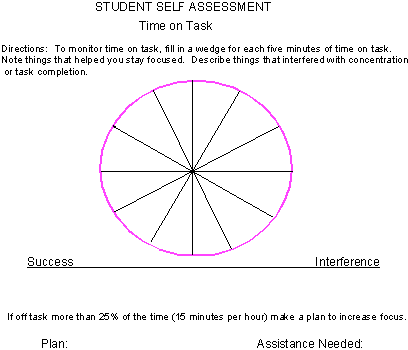 |
Another form of self monitoring involves the process objectives and then evaluating progress at the end of the subject, group work or day. The self monitoring form then goes into the student portfolio, and the Friday session can include a quick look at how the student sees attention to learning and how the teacher perceives the week’s efforts. Again, this can be simplified for the younger students, could be sent home for parents who are helping the student monitor improvements in behavior and wish a daily record of student actions.
The last example of self monitoring is a sheet that includes an entire month at a glance. The topics for monitoring can include the classroom rules, process skills that are being developed as a part of the ambiance in the classroom, such as respect and community building, communication skills, time on task, or goals setting. The self monitoring sheets are passed out at the beginning of the month and students go over the areas targeted. Students are taught how to self monitor, and the first few days, the teacher cues them on times to make notations, each student keeping the sheets on the desk in a portfolio. At the end of the first month, students tally and report on their successes, and they can assist in choosing what they will be monitoring in the coming month.
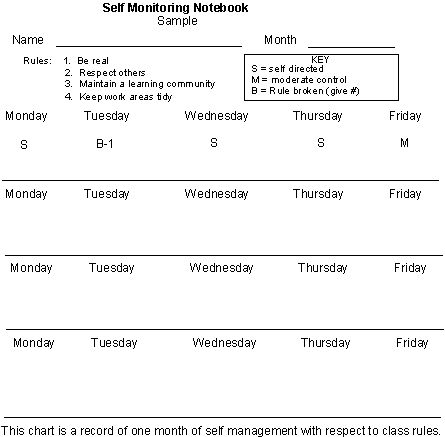 |
Some students may need a personalized set of procedures that will enhance
performance. Some students may offer to give peer assistance to others
who challenge the process or have difficulty staying organized in record
keeping. Monitoring sheets can be kept in individual portfolios, copies
mailed to parents along with standard grade reports, put in a computerized
data sheet to help the teacher evaluate student process skills and areas
for additional formal lessons on community building. Daily monitoring
provides added bonuses. It increases the vocabulary for discussing infractions
and consequences, provides insight into the way a student sees behavior,
supplies a tool for informing the student about how others are seeing
certain behaviors, for reflecting on changes, and is a supportive deep
structure for youngsters who do best when clear about expectations and
guidelines.
Summary
Each of these tools enhances the student sense of ownership and responsibility.
It expands the learning role in a structured and nurturing manner. Students
who are ready for this role can move forward rapidly, and less organized
students get the help they need to feel more secure about learning and
get assistance acquiring tools to manage school life more effectively.
These learning and organizational tools for changing student perception
and abilities to be responsible can be introduced all at once or put in
place one at a time. Initially, students may express frustration, at times
even resentment, at being asked to take control of self rather than having
the teacher work to control them while they undermine teacher power. Establishing
new roles and introducing systemic changes of this magnitude is a learning
experience for teachers and for students.
![]()
As noted earlier in the article, these changes are difficult for the
teacher, as well. Perhaps the most difficult part of the change is “letting
go,” giving the changes a chance to work and trusting in human nature
and student desire to learn sufficiently to go through the four or five
weeks necessary for a successful transition. As is true of any change,
the administration needs to be apprised of the concepts so they can be
supportive of the teacher. Rather than being surprised by someone coming
to them in frustration, they have an understanding and appreciation for
the foundational philosophy that is the basis for the discipline. It is
also helpful to let parents know about the self monitoring so they can
be supportive of the process and watch for the developmental changes as
students move from frustration to a sense of ownership.

Students will also need to feel that they have a part in setting the
ideas in motion and that their concerns are important and valued. This
process is helpful for all students, but it is especially useful for students
who feel disenfranchised at school. Becoming involved in school as an
owner of learning, a participant in rule setting and goal development
provides a sense of dignity for students who have been less successful
than peers. By valuing students at a personal level and providing opportunities
to be successful -- at self monitoring and choosing a personal pace, gaining
expertise at organization, recognizing and choosing the deep structure
of self discipline, honoring strengths and seeing that all students have
areas for building and improving, students who were previously at risk,
gain a sense of hope.
Teachers who cannot or will not build relationship with students will
find these suggested changes daunting. Teachers who feel that the teacher
alone can hold a firm rein on the classroom in order to assure academic
success will also find these ideas difficult. Although there is an increase
in structure through use of self management and self monitoring tools,
and typically an increase in time on task and progress through content,
the reins are shared, and the teacher moves more and more into the facilitator
or “servant-leader” role.
![]()
References
Allport, G. W. (1954). The nature of prejudice. Cambridge, MA: Addison-Wesley.
Bandura, A. (1993). Perceived self-efficacy in cognitive development and functioning. Educational Psychologist, 28(2), 117-148.
Bloom. B.S. (1968). Learning for mastery. Evaluation Comment, 1(2). Los Angeles, University of California, Center for the Study of Evaluation of Instructional Programs.
Borko, H. (1989). Research on learning to teach: Implications for graduate teacher preparation. In A. Woolfolk (Ed.), Research perspectives on the graduate preparation of teachers (pp. 69-87). Boston: Allyn & Bacon.
Clark, D.L. & Astuto, T.A. (1994). Redirecting reform: Challenges to popular assumptions about teachers and students. Phi Delta Kappan, 75, 512-520.
Covey, S. R. (1991). Principle centered leadership. New York: Summit Books.
Donaldson, M. (1985). The mismatch between school and children’s minds. In N. Entwistle (Ed.), New directions in educational psychology. Vol. I: Learning and teaching. Philadelphia: Falmer Press.
Doyle, W. (1990). Themes in teacher education research. In Houston, W.R. (ed.). Handbook of research on teaching. New York: Macmillan.
Driscoll, M. P. (1994). Psychology of learning for instruction. Boston: Allyn & Bacon.
Dunn, R. & Dunn, K. (1978). Teaching students through their individual learning styles. Reston, VA: Preston.
Erikson, E.H. (1963). Childhood and society. (2nd ed.). New York: Norton.
Gagne´, E. D. (1993), in Yekovich, C. W., & Yekovich, F. R. (1993). The cognitive psychology of school learning. (2nd ed,). New York: Harper-Collins.
Gardner, H. (1993). Creating minds. New York: Basic Books.
Hyman, I. A. (1997). School discipline and school violence: The teacher variance approach. Needham Heights, MA: Allyn & Bacon.
Johnson, D. W. & Johnson, R. T. (1994). Learning together and alone: Cooperative, competitive and individualistic learning. Boston: Allyn & Bacon.
Jones, V.F. & Jones, L.S. (1990). Comprehensive classroom management. Needham Heights, MA: Allyn & Bacon.
Kirst, M. (1991a). Interview on assessment issues with Lorrie Shepard. Educational Researcher, 20(2), 21-23.
Kirst, M. (1991b). Interview on assessment issues with James Popham. Educational Researcher, 20(2), 24-27.
Kuhn, T. (1962). The structure of scientific revolutions. Chicago, IL: University of Chicago Press.
Piaget, J. (1970). The science of education and the psychology of the child. New York: Orion Press.
Piaget, J. (1973). To understand is to Invent: The Future of Education.
Peterson, P.L. & Comeaux, M.A. (1989). Assessing the teacher as a reflective professional: New perspectives on teacher evaluation. In A. Woolfolk (Ed.), Research perspectives on the graduate preparation of teachers (pp. 69-87). Boston: Allyn & Bacon.
Reinsmith, W. A. (1992). Archetypal forms in teaching: A continuum. New York: Greenwood Press.
Rogers, C. R. (1969). Freedom to learn. Columbus, OH: Charles E. Merrill.
Sch¨øn, D. (1983). The reflective practitioner. New York: Basic Books.
Siegler, R. S. (1991). Children’s thinking (2nd ed.). Englewood Cliffs, NJ: Prentice-Hall.
Stipeck, D. J. (1993). Motivation to learn: From theory to practice. (2nd ed.). Boston: Allyn & Bacon.
Swanson, H. O’Conner, J.E., & Cooney, J.B. (1990). An information processing analysis of expert and novice teachers’ problem solving. American Educational Research Journal, 27, Appendix B.
Tochon, F. & Munby, H. (1993). Novice and expert teachers’ time epistemology: A wave function from didactics to pedagogy. Teaching and Teacher Education, 9, 205-218.
Vygotsky, L. S. (1986). Thought and language. Cambridge, MA: MIT Press.
Weigand, J. E. (Ed.). (1971). Developing teacher competencies. Englewood Cliffs, NJ: Prentice-Hall.
Wolf, D., Bixby, J., Glenn, J., III, & Gardner, H. (1991). To use their minds well: New forms of student assessment. Review of Research in Education, 17, 31-74.
You should now:
Go on to complete assignments in this module
or
Go back to Adolescence
![]() E-mail J'Anne
Ellsworth at Janne.Ellsworth@nau.edu
E-mail J'Anne
Ellsworth at Janne.Ellsworth@nau.edu
Copyright © 1999 Northern Arizona
University
ALL RIGHTS RESERVED

